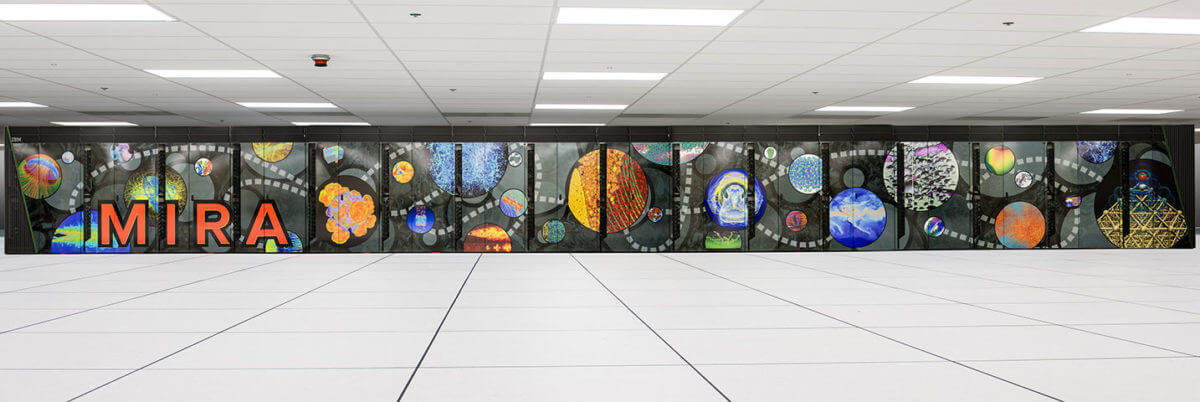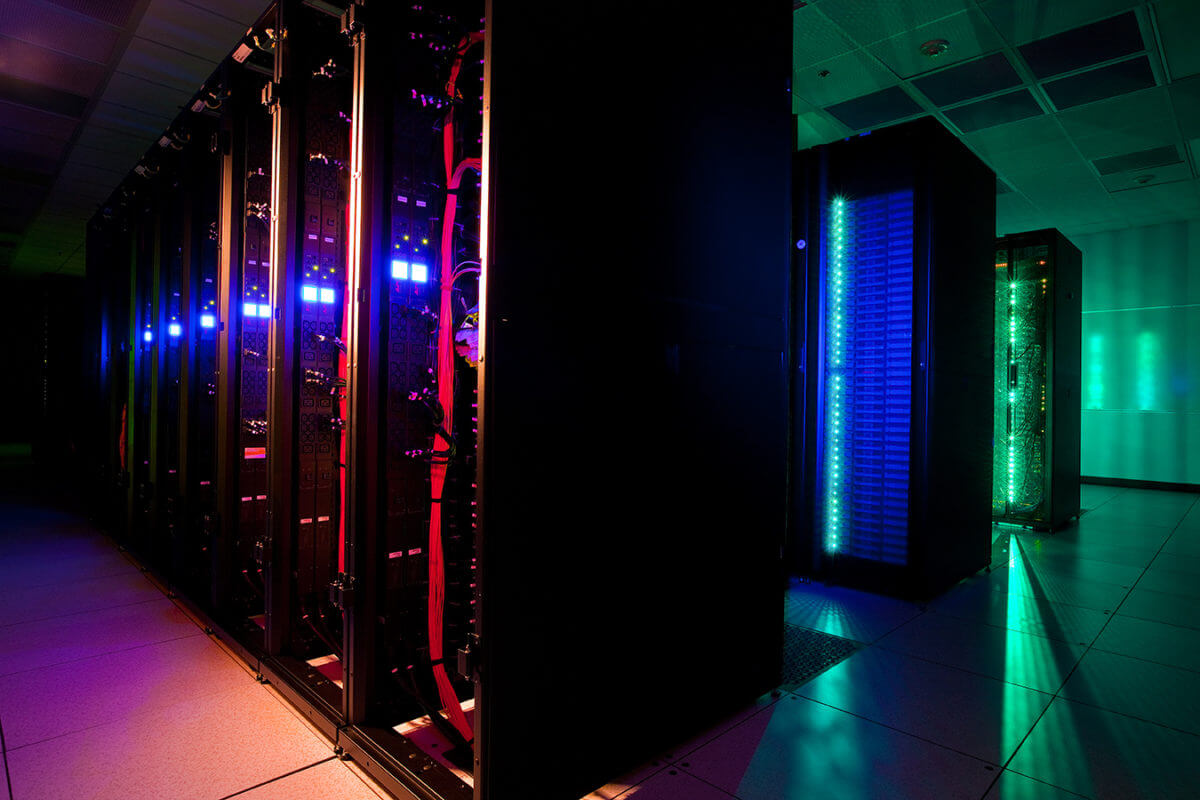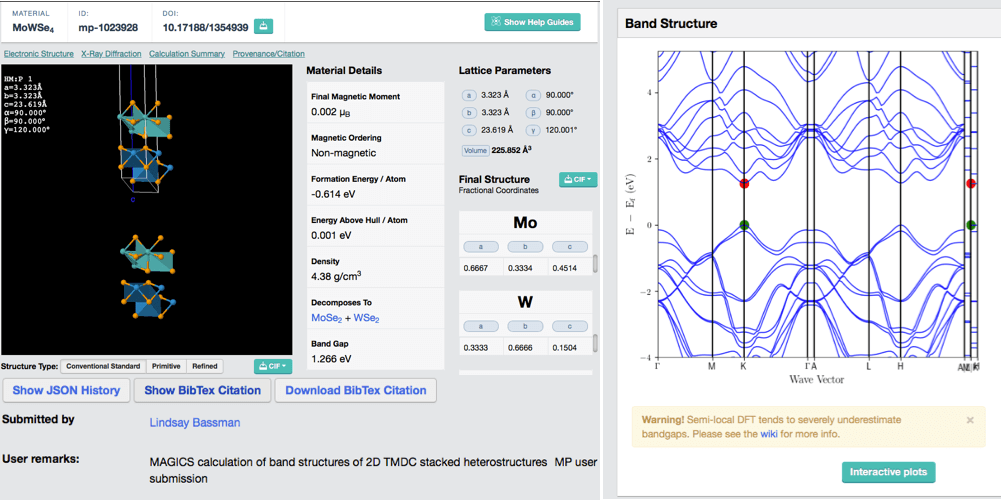Magic Resources
MAGICS Software Development and Deployment Platforms
Two DOE supercomputing resource awards to center PIs provide access to infrastructure necessary to develop metascalable (or "design once, scale on current and future architectures") software that can perform extreme-scale simulations on atomic dynamics of photoexcited materials at the same length and time scales as those in ultrafast pump-probe experiments.
- Aurora Supercomputer ESP (Early Science Program) Award: "Metascalable layered materials genome," A. Nakano, R. K. Kalia and P. Vashishta (USC). This is one of the ten projects that will exclusively use the next-generation DOE supercomputer, Aurora, when it is delivered in 2019 at Argonne Leadership Computing Facility (ALCF). Aurora, based on the third-generation Intel Xeon Phi many-core processor named Knights Hill (KNH), is expected to achieve over 180 petaflop/s of performance.
- DOE INCITE (Innovative and Novel Computational Impact on Theory and Experiment) Award: "Petascale simulations for layered materials genome," A. Nakano and P. Vashishta (USC). We are allocated 140 million processor-hours/year of computing on Mira, the 786,432-processor IBM Blue Gene/Q computer at ALCF.

Image of Mira, the supercomputing cluster located at ALCF, which will be the workhorse for the center's petascale computational synthesis simulations
- Utilizing our DOE INCITE award, we have initiated two extreme-scale simulations on the 786,432-processor Blue Gene/Q computer at ALCF. For computational synthesis, we are performing RMD simulations to study the exfoliation of MoS2 assisted by cavitation bubble collapse (left panel). For computational characterization, we are performing NAMQMD simulations to study photo-excitation dynamics in a stack of TMDC monolayers on a substrate (right panel). The simulated photoexcitation dynamics will be validated using the free-electron X-laser at LCLS at exactly the same space and time scales.
- Extreme-scale simulations for computational synthesis and characterization: (Top) RMD simulation of the exfoliation of MoS2 assisted by cavitation bubble collapse. (Bottom) NAQMD simulation of photo-excitation dynamics in a stack of different TMDC monolayers on a substrate.
In addition, MAGICS investigators have large computing allocations on the 13440-core, 0.89 petaflop/s cluster at USC Center for High Performance Computing (HPC).

USC-HPCC: The high performance computing cluster at the University of Southern California, which will be used for high-throughput calculations and software development.
Unique Capabilities for the Synthesis and Functionalization of New Layered Materials
The MAGICS Center has unique in-house capabilities to synthesize new layered materials at Rice and functionalize them at USC. These new LMs have been simulated in the high-end parallel supercomputers and characterized at LCLS and UED at SLAC.
- The Ajayan lab at Rice has a capability for growth and synthesis of various kinds of nanomaterials, characterization of these materials, fabrication of various devices and measurement of various properties including electrical, mechanical, thermal and optical. The state-of-the-art central characterization facility houses instrumentation such as SEM, TEM (equipped with EDX and GIF), electrical probe station, XPS, Raman, DSC, TGA. There are also e-beam lithography tools accessible, as well as clean room facilities to do the patterning work proposed. A double Cs corrected Titan TEM microscope and an FEI FIB system have recently been installed as core facilities at Rice.
- The Gupta lab at USC has two custom-designed vapor phase polymerization systems composed of a 25 cm round stainless-steel chamber with a borosilicate glass viewport. The systems are capable of in-situ optical interferometry for real-time thickness measurements. The lab also owns several surface characterization instruments: a Nicolet iS10 Mid Infrared FT-IR Spectrometer with a universal sample holder for chemical analysis and a Ramé-Hart contact angle goniometer with automatic dispensing capabilities.

Initiated chemical vapor deposition (iCVD) for functionalization of complex nanostructures that are not accessible by liquid-phase approaches
SLAC National Accelerator Laboratory Validation Platforms
MAGICS simulations on photoexcitation dynamics in layered materials are validated by free-electron X-ray laser and ultrafast electron diffraction experiments at SLAC National Accelerator Laboratory at exactly the same space and time scales.
- Linear Coherent Light Source (LCLS) is the world’s first hard X-ray free-electron laser. LCLS produces extremely intense, pulsed, monochromatic X-ray radiation, with high spatial coherence. The LCLS facility currently houses six purpose built scientific instruments that are equipped with state-of-the-art optical pump lasers, sample delivery and handling, motion control, detection and data readout systems.
- Ultrafast Electron Diffraction (UED) facility provides mega-electronvolt ultrafast electron diffraction capability to probe lattice displacements and local temperature in few-layer materials transiently.

The ultrafast electron diffraction facility at SLAC has been used to validate NAQMD simulations at USC.
Berkeley Lab Data Dissemination Platforms
Materials synthesis and characterization data generated by simulations and experiments in the MAGICS center will be disseminated through the Materials Project database infrastructure developed by and deployed at Berkeley Lab.

Distribution of MAGICS data through the Materials Project Infrastructure at Berkeley Lab.

